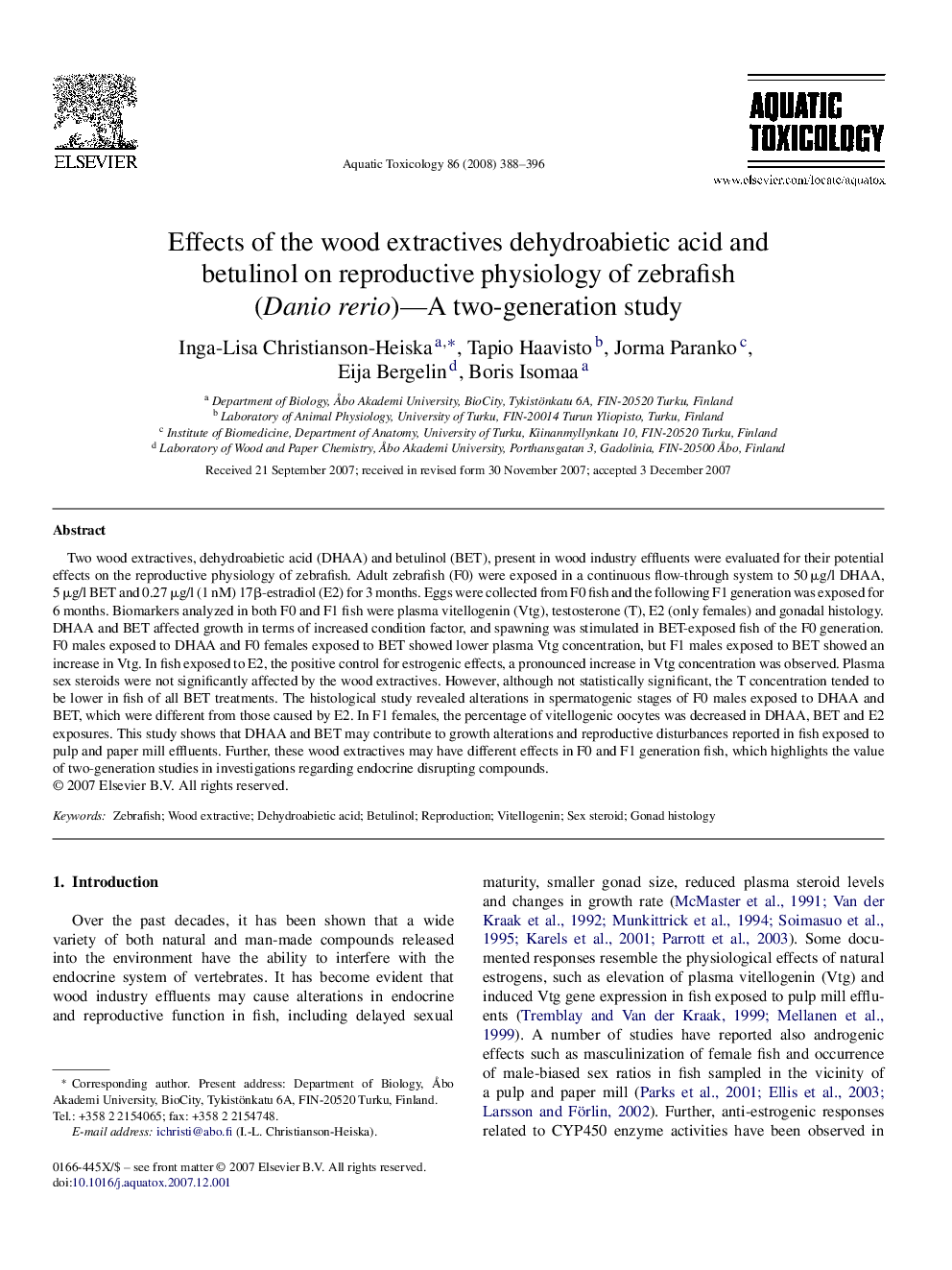| کد مقاله | کد نشریه | سال انتشار | مقاله انگلیسی | نسخه تمام متن |
|---|---|---|---|---|
| 4530877 | 1324736 | 2008 | 9 صفحه PDF | دانلود رایگان |

Two wood extractives, dehydroabietic acid (DHAA) and betulinol (BET), present in wood industry effluents were evaluated for their potential effects on the reproductive physiology of zebrafish. Adult zebrafish (F0) were exposed in a continuous flow-through system to 50 μg/l DHAA, 5 μg/l BET and 0.27 μg/l (1 nM) 17β-estradiol (E2) for 3 months. Eggs were collected from F0 fish and the following F1 generation was exposed for 6 months. Biomarkers analyzed in both F0 and F1 fish were plasma vitellogenin (Vtg), testosterone (T), E2 (only females) and gonadal histology. DHAA and BET affected growth in terms of increased condition factor, and spawning was stimulated in BET-exposed fish of the F0 generation. F0 males exposed to DHAA and F0 females exposed to BET showed lower plasma Vtg concentration, but F1 males exposed to BET showed an increase in Vtg. In fish exposed to E2, the positive control for estrogenic effects, a pronounced increase in Vtg concentration was observed. Plasma sex steroids were not significantly affected by the wood extractives. However, although not statistically significant, the T concentration tended to be lower in fish of all BET treatments. The histological study revealed alterations in spermatogenic stages of F0 males exposed to DHAA and BET, which were different from those caused by E2. In F1 females, the percentage of vitellogenic oocytes was decreased in DHAA, BET and E2 exposures. This study shows that DHAA and BET may contribute to growth alterations and reproductive disturbances reported in fish exposed to pulp and paper mill effluents. Further, these wood extractives may have different effects in F0 and F1 generation fish, which highlights the value of two-generation studies in investigations regarding endocrine disrupting compounds.
Journal: Aquatic Toxicology - Volume 86, Issue 3, 18 February 2008, Pages 388–396